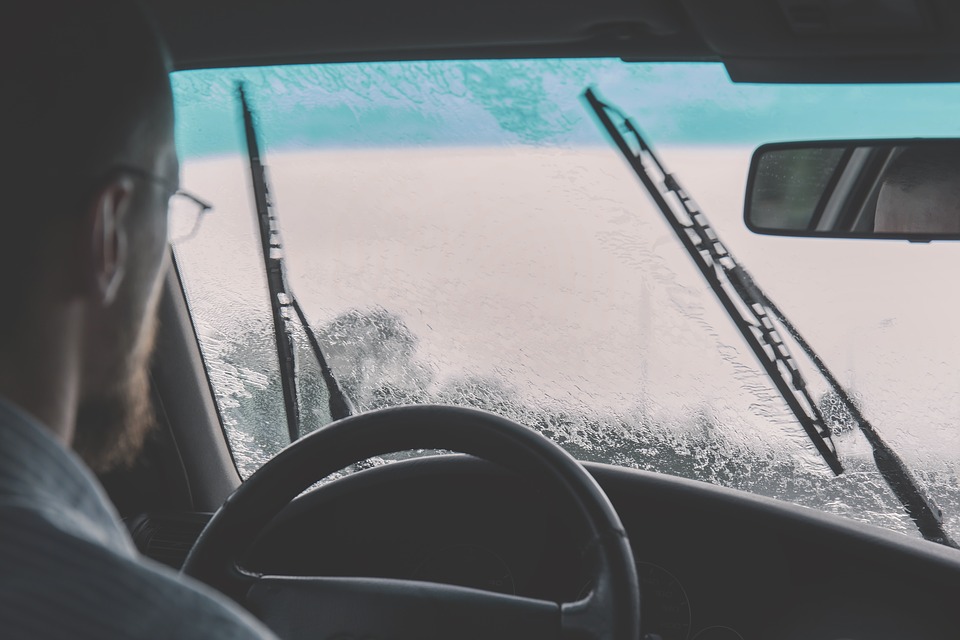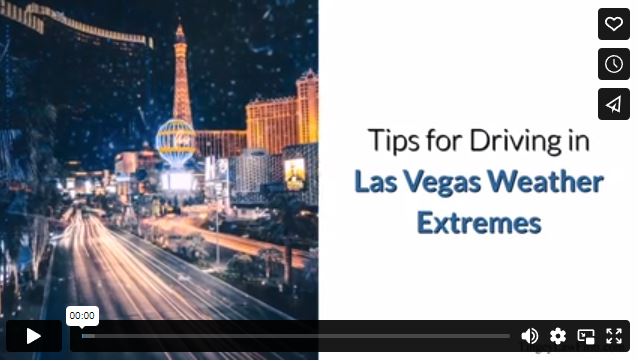Driving is always a risky pursuit, and if you add to that bad weather, the stakes get even higher. Out of the nearly 6 million vehicle crashes that occur each year in the U.S., approximately 21% are weather-related (Federal Highway Administration).

(Pixabay / StockSnap)
Fortunately, Las Vegas drivers rarely have to deal with the hazards of winter weather, but they do contend with rain and heat. Here’s a look at how to stay safe in these weather conditions.
Rain
Las Vegas averages about 21 rainy days per year—which isn’t much compared to many places around the country. But the scarcity of rain can ratchet up the road dangers because local drivers may not be experienced in traversing wet roads.
When it comes to car crashes influenced by weather, the majority are rain-related (70% of these crashes occur on wet pavement, and 46% happen during rain). Though you may think snow and ice may be the bigger problem, they are responsible for less than 18% of weather-related crashes.
Knowing that rain is a major hazard, here are some tips for driving safely in it.
- Slow down. Speeding on wet roads is a recipe for disaster. Tires are designed to scatter water as they pass over wet roads, but when you speed, you make it harder for your tires to do their job and increase your risk of hydroplaning. You should be especially careful not to speed on ramps as it can be easy to slip and slide right off of them in wet weather. Rain also slows down your reaction time, so when you exceed speed limits on wet roads, you may not be able to brake in time. Which takes us to our next tip…
- Don’t tailgate. Tailgating is always a bad idea as you increase your risk of rear-ending the person in front of you if they stop suddenly. In rain, it’s an especially poor idea. In dry weather, you should keep 3 seconds of space between you and the driver in front of you. To assess this, note when their rear bumper passes a fixed object (sign, bridge, crack in the road, etc.) and ensure that you can count to three seconds before you reach the designated marker. In rain, you should double this following distance to 6 seconds.
- Maintain your tires. Make sure to check your tire pressure regularly with a gauge to ensure that it meets the manufacturer’s recommendations. Tires that aren’t properly inflated are more prone to hydroplaning in the rain. You should also rotate or buy new tires as needed. When the tread on your tires wears down, they cannot handle dry roads well—let alone wet roads.
- Buckle up. The National Highway Traffic Safety Administration website shows that of the roughly 37,133 people killed in motor vehicle crashes in 2017, 47% were not wearing their seat belts. The same site shows that if you buckle up in the front seat of a passenger car, you can reduce fatal injuries by 45 percent and moderate to severe injuries by 50 percent. Buckling up is critical at all times, but especially in inclement weather when crash risks soar.
- Turn on your headlights. You’ll be able to see other drivers and road conditions better, and other drivers will be able to see you better if you activate your lights.
- Prepare for skidding. If you feel yourself starting to skid in the rain, your gut reaction may be to jerk your steering wheel in the opposite direction. Instead, stay calm, ease your foot off the gas pedal, and carefully turn your steering wheel in the direction you want the front of your vehicle to go.
- Avoid standing water. Anything over 4 inches could get your car in big trouble. Stop and wait for things to clear or find an alternate route; passing through deep water can compromise and even destroy your car’s engine. If you do become trapped in rising water from a flash flood, abandon your vehicle and move to higher ground.
Of course, given the risks of driving in the rain, the best solution is to stay off the roads if at all possible. But if you must drive, make sure you follow smart safety practices.
Heat
Extreme heat can wreak havoc on a car and increase the risk of breakdowns and accidents. With average summer highs soaring above 100° in Vegas, it’s critical to be vigilant about car care.
- Treat your tires right. You’re more likely to have a tire blowout in the heat of summer, which can be very dangerous to you and other motorists if you lose control of your car in the process. To avoid a blowout, give your tires plenty of love in the summer. Make sure that they have a sufficient amount of tread and that they are inflated according to the manufacturer’s recommendations.
- Check your battery. If your battery is more than three years old, you’re on shaky ground for summer driving in Vegas. The extreme heat can deplete your battery and leave you stranded. Have it checked out by an auto technician to determine its life expectancy.
- Maintain your cooling system. The cooling system in a vehicle helps to keep the engine running well, so if it’s compromised, your engine could feel the effects. Make sure to have it checked out at the start of summer.
- Top off your fluids. Your car requires a number of fluids to keep the inner workings lubricated and cool (motor oil, power steering fluid, brake fluid, transmission fluid, etc.) These fluids tend to evaporate faster in summer. Check your fluid levels to keep your care in top shape and avoid breakdowns.
Unfortunately, accidents still happen—even to the best prepared motorists. If you’re injured in a car accident in Las Vegas due to weather or any other issues, contact an experienced auto accident injury attorney in Vegas. They can stand up to big insurance companies, protect your rights, and help you recover your losses.
Video

